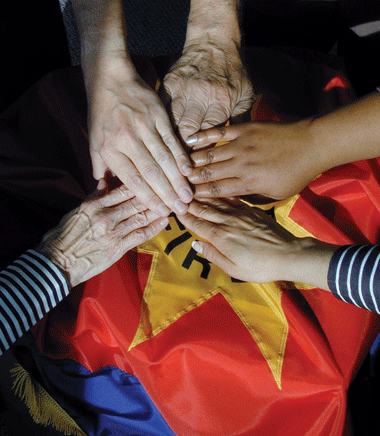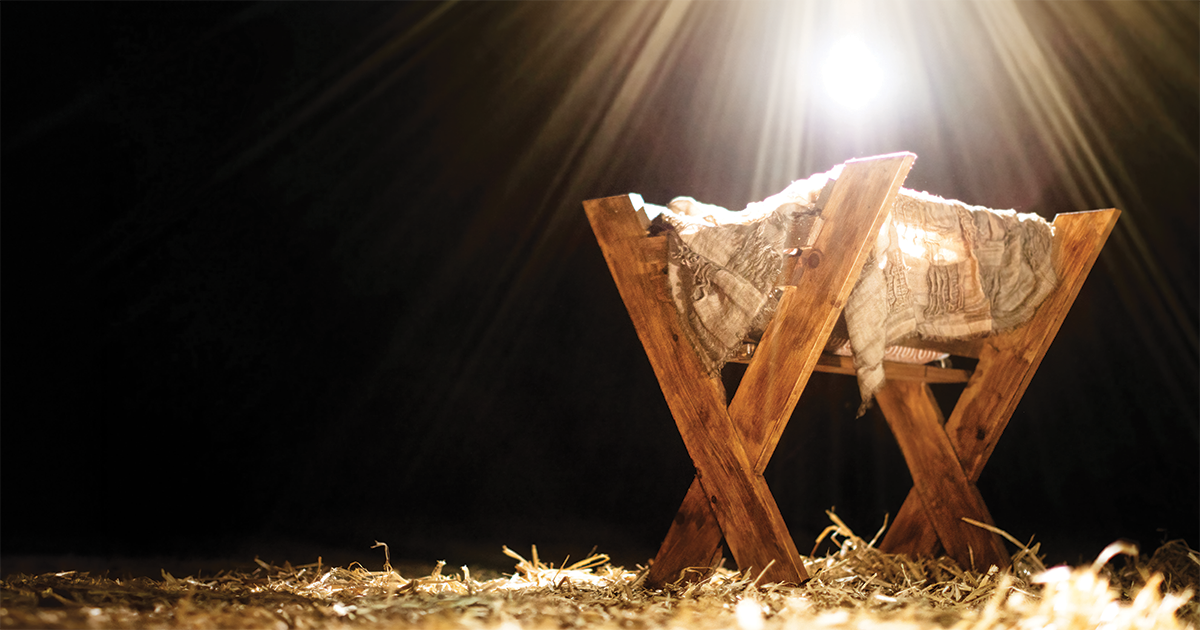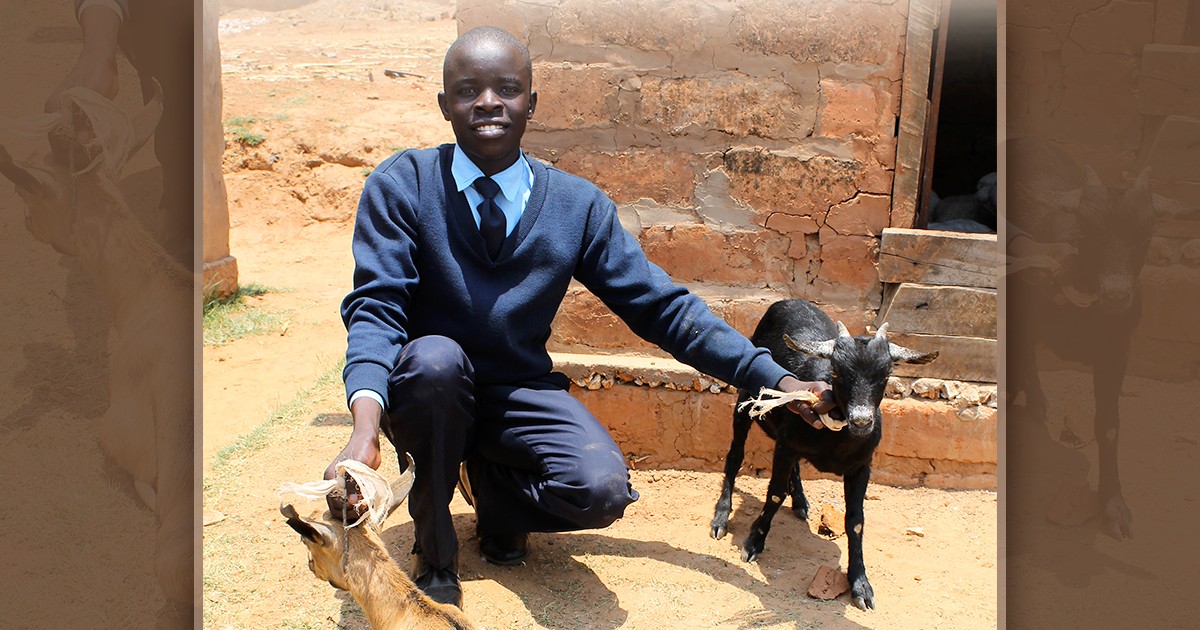 Recently I came across a recruiting advertisement for Salvation Army officers in an American Salvation Army publication. It depicted five jackets hanging on a rack, each jacket a part of a different uniform. Moving from background to foreground was a paramedic's jacket, a navy tunic, a camouflage army jacket, a firefighter's coat, and in front of them all, a Salvation Army officer's tunic. The caption at the top of the page read: “We need heroes! Join the mission.”
Recently I came across a recruiting advertisement for Salvation Army officers in an American Salvation Army publication. It depicted five jackets hanging on a rack, each jacket a part of a different uniform. Moving from background to foreground was a paramedic's jacket, a navy tunic, a camouflage army jacket, a firefighter's coat, and in front of them all, a Salvation Army officer's tunic. The caption at the top of the page read: “We need heroes! Join the mission.”
The implication is obvious. Drawing upon a strong military tradition and a pervasive military culture within the United States, and combining it with symbols of firefighters and paramedics—symbols that are particularly strong in the wake of 9/11—a compelling image of self-sacrifice and heroism is created. Placing a Salvation Army uniform next to these emblematic garments sends a strong message: “Those who wear these jackets are society's protectors. They give more; they sacrifice more; they are the watchmen standing on the wall, the people we turn to when we are in trouble.” In an American context, this is a very effective message.
Our Proud Heritage
The Salvation Army is an interesting phenomenon within the Christian Church. As a denomination, we have chosen to identify so much with one particular metaphor of the body of Christ that the metaphor itself has shaped our leadership structure, missional praxis, mode of membership, style of music, language and even our dress. The Bible has numerous rich and diverse symbols for the Church. Why would a movement wed itself so fully to just one?
When considering the Army's military metaphor, it is important to remember the era in which it was birthed. The Salvation Army was founded in one of the world's most militaristic nations during one of history's great love affairs with all things military. In 19th-century England, a soldier's uniform was worn proudly. European heads of state were often portrayed in military garb. Uniforms, bands, soldiers on parade—these were all important parts of the dominant culture that, given England's imperial influence, quickly spread throughout the world.
By co-opting and spiritualizing this militarism, the early Salvation Army could not have chosen a more deeply symbolic or effective biblical symbol. Like the advertisement in the American magazine, it would have resounded in the hearts of people with inspiration and pride. In addition, the military metaphor provided the Army with an ultra-efficient structure of centralized decision making, ready-to-move leadership, franchise-model mission stations and passionate members, all of which enabled it to spread its message to every corner of the globe.
Current Cultural Context
Inevitably, however, times change. The world in which The Salvation Army was formed no longer exists. First, we must not forget that the 20th century was by far the bloodiest in history. Since 1914, we have survived two devastating world wars. We have lived through fascism and communism, Hiroshima and Nagasaki, Vietnam and the 1960s' peace movement, even the paranoia and fear of the Cold War. During the 1990s, the world entered the shadow of ethnic genocide, terrorism, warlordism, ethnic and religious conflicts, and religious extremism.
Every member of every corps should understand the spiritual battle that rages in the world and the incredible real-life pain and suffering that lies in its wake
The innocence of pre-1914 Europe is long over. With all the horror and bloodshed the world has experienced, society's reverence for all things military has drastically changed. The love affair is over. Yet in all of this The Salvation Army remains a still-frame photo—a quaint snapshot of one aspect of 19th-century England and the world it dominated.
We must have the courage to ask if, in our day and age, the military metaphor hinders or helps Christian mission? For example, within a strict Salvation Army cultural context, the term “junior soldier” for―church membership for children―is a good and even prophetic concept. However, for most people who read about current events or watch the news, the image of “child-soldiers” is one of the most horrific social injustices facing our world. During the past decade, thousands of children in countries such as Uganda, Sudan and Liberia have participated in war. They have been captured, brainwashed, drugged and forced to massacre innocent people. A metaphor is meant to clarify and convey a message, to juxtapose two different concepts in the hope of making one more clear. But what image is more readily brought to mind when soldiership is matched with a child—a junior member of a church or another victim of violence?
The Bible is filled with metaphors, no doubt because they have undeniable power to evoke new ideas and emotions in people's minds and hearts, both good and bad. Therefore one must ask, how effective is this particular metaphor? In today's society, does military language and imagery conjure thoughts of pride and heroism, as in the early days of our Movement? Or, with all the violence, war and suffering in our world, does it accomplish the opposite?
In Canada, despite our history as international peacekeepers and our current involvement in Afghanistan, the military is not a dominant part of the culture. In the United States, the president is actually the Commander in Chief of the military. During election time, a U.S. political candidate's military record is an important consideration for the average voter. The language of battle is common in State of the Union addresses. In Canada, however, this is not the case. In fact, militarism can be seen as a detriment rather than a benefit. When the average Canadian first tries to comprehend the concept of a Salvation Army, what cultural norms must they set aside in order to make it comprehensible? In a non-militaristic culture, so far from the culture in which the Army was birthed, how well does the metaphor translate? Does it translate at all?
Reclaiming the Metaphor
The whole discussion raises some serious questions: Where do we go from here? What place is left in today's world for a military image of the Church? What is The Salvation Army's role?
The answer, I think, lies in reclaiming the substance of our metaphor rather than the form. When we major on the form of the “army” metaphor, church programs must bear some sort of military name, leaders must have a title such as sergeant or captain, and there must be a distinct uniform that is worn properly. Adherence to a strict hierarchical leadership structure is paramount, as is the rank system for our leaders. On the other hand, if we have the courage to set aside the form and focus on the substance of the metaphor, our hearts will beat along with William Booth's words:
“While women weep, as they do now, I'll fight; while little children go hungry, as they do now, I'll fight; while men go to prison, in and out, in and out, as they do now, I'll fight; while there is a drunkard left, while there is a poor lost girl upon the streets, while there remains one dark soul without the light of God, I'll fight—I'll fight to the very end!”
These are rightly the Founder's most quoted words. In them, William Booth summarizes what it means to be a Salvation Army, a saving Army. In a world filled with violence, abuse and atrocity, a member of The Salvation Army, by virtue of our name, structure and history, can stand and say:
“While HIV/AIDS ravages Africa, as it does now, I'll fight; while civil and ethnic conflicts rage throughout the world, as they do now, I'll fight; while children are victims of international sex trafficking, coerced, abused and enslaved, as they are now, I'll fight; while millions live each day without enough food to eat, as they do now, I'll fight; while there is one addict left, while there is a poor lost girl upon the streets, while there remains one dark soul without the light of God, I'll fight—I'll fight to the very end.”
The non-essentials—the form of the metaphor—quickly fade in the light of such a mission imperative.
“True Soldiers Live to Fight”
I'll Fight. Salvationists should write it on their doorposts, on the backs of their hands, on their foreheads. Every junior soldier should be taught about the plight of child-soldiers. Every member of every corps should understand the spiritual battle that rages in the world and the incredible real-life pain and suffering that lies in its wake. And every soldier should be reminded that, as William Booth said, “True soldiers fight, live to fight, love to fight, love the thickest of the fight and die in the midst of it.”
Viewed through the lens of social justice, The Salvation Army's military metaphor is enlivened and made relevant for a new century. Today's Army has a choice. We can choose to be a quaint, confusing remnant of a 19th-century Christian cultural phenomenon, or we can set aside the form of the metaphor and replace it with the substance.
In the end, the We Need Heroes advertisement gets it right. For under the emboldened title, and beneath the symbols of society's protectors, is a caption from an old hymn that reads: “Rescue the perishing, care for the dying, snatch them in pity from sin and the grave. Weep o'er the erring one, lift up the fallen, tell them of Jesus, the mighty to save.”
There is often a world of difference between rhetoric and reality. What will we choose?









Leave a Comment